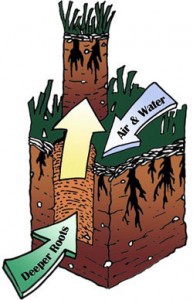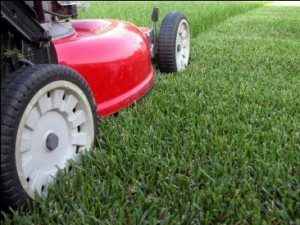
Now that winter is over what do you need to do to help your lawn recover and thrive this spring?
The harsh New England winter can leave quite a mess. This year we had extreme cold weather and sustained and heavy snow cover. Many lawns are littered with branches and leaves from the winter winds. If your lawn abuts the street it may be covered in a layer of sand and salt still. The weight of the snow over the winter caused compaction of the soil which can stifle root growth and recovery. The extended period of moisture under the snow and the freezing and thawing of the leaf blades causes cell damage and the surface of the plants can rot. The good news is that the root system of your lawn is very resilient; we just need to get it growing again and sending up new shoots.
Perhaps your best tool to get your lawn ready is a good blower. Use it by the street to remove as much of the sand and salt as possible. Blow off any leaf or twig litter. And any areas of grass that look matted down and stuck together blow heavily to loosen, this will allow it to grow out. If you don’t have a blower much of this can be done with a dethatching or tyne rake. If the soil is very compacted or if areas sat under heavy leaf cover for an extended period of time it may need to be core aerated and overseeded.
 Your lawn should now be ready to start using its first fertilization of the year and begin growing. You should mow so that the grass is cut at 2.5” tall during the first 2 mows to help remove the dead or damaged portion of the grass. After that raise the mowing height way up to 3.5”; this will shade the soil and encourage deep root growth. Keeping the soil shaded is important because crabgrass seeds require direct contact with sunlight to germinate. If you can keep your lawn thick, tall, and water enough to prevent it from going dormant and brown you will prevent crabgrass.
Your lawn should now be ready to start using its first fertilization of the year and begin growing. You should mow so that the grass is cut at 2.5” tall during the first 2 mows to help remove the dead or damaged portion of the grass. After that raise the mowing height way up to 3.5”; this will shade the soil and encourage deep root growth. Keeping the soil shaded is important because crabgrass seeds require direct contact with sunlight to germinate. If you can keep your lawn thick, tall, and water enough to prevent it from going dormant and brown you will prevent crabgrass.
